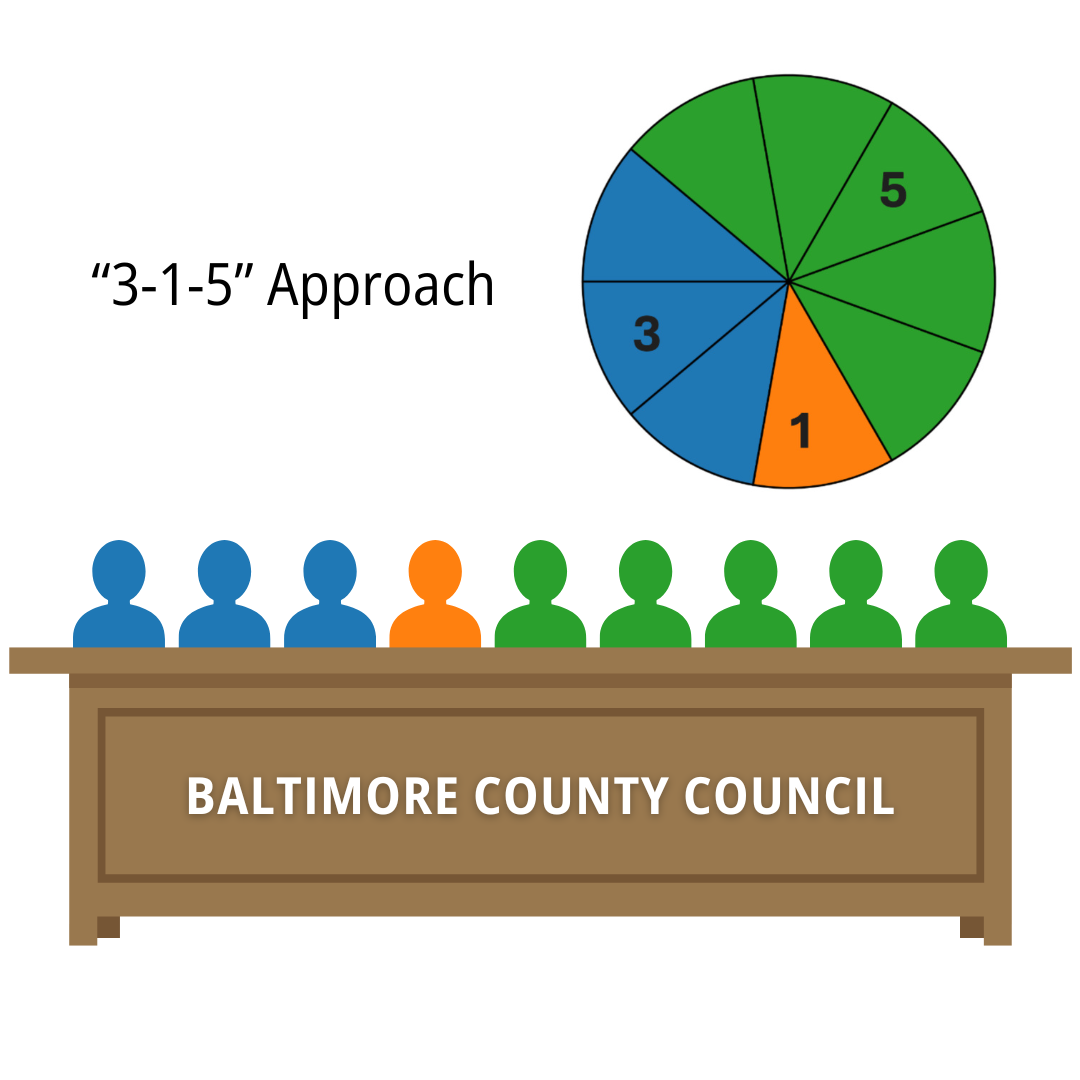Opponents of 3-1-5 want to rewrite who counts as Black—and in doing so, they violate the Voting Rights Act.

Opponents of a fully-representational 3-1-5 map (3 majority-Black districts + 1 majority-minority district + 5 majority-white districts) argue that Maryland state redistricting law—specifically as it applies to Baltimore County—counts "Blacks" differently than federal law, and therefore justifies excluding multiracial Black individuals when calculating Black Voting Age Population (BVAP).
This argument about Maryland’s “different” racial classification is not just legally flawed—it’s a distraction. It’s being used to divide communities and justify limiting Black representation. The law is clear: anyone who self-identifies as Black must be counted, and Baltimore County is obligated to follow that federal standard.
Even Baltimore County’s Own Consultant Acknowledged the Standard
Dr. Kareem Crayton—a nationally recognized voting rights expert and advisor to the Baltimore County Redistricting Commission—publicly affirmed in an NPR interview that the “any-part Black” standard is the correct and widely accepted approach. If your own advisor uses the federal standard, that’s a pretty clear sign that the narrower interpretation isn’t defensible.
NPR: “Why Some Republicans Want to Narrow Who Counts as Black”
NPR Transcript
1. Federal Law Trumps State Law
The Supremacy Clause of the U.S. Constitution (Article VI) makes it clear: federal law overrides conflicting state law. When it comes to voting rights and redistricting, federal precedent—particularly the Voting Rights Act (VRA)—is the controlling authority.
📌 Bottom line: Any state or local practice that contradicts federal standards for racial classifications in voting rights contexts is invalid.
2. The Supreme Court Has Settled This
In Georgia v. Ashcroft (2003), the Supreme Court explicitly affirmed that individuals who identify as Black in any way—whether solely or in part—must be included in BVAP counts.
“We believe it is proper to look at all individuals who identify themselves as black.”
— Georgia v. Ashcroft, 539 U.S. 461, fn.1
This is the standard used by:
- The Department of Justice
- Civil rights organizations (e.g. ACLU, NAACP Legal Defense Fund)
- The U.S. Census Bureau
- Voting rights attorneys and demographers nationwide
📌 Bottom line: Courts, experts, and federal agencies all agree: “Any-part Black” is the legal standard—not some narrower, state-defined classification.
3. Maryland Law Doesn’t Override VRA Standards
Even if Maryland law uses narrower definitions in other contexts (such as prison gerrymandering adjustments, which reallocate incarcerated individuals for redistricting purposes), those policies do not apply to the federal BVAP standard for Voting Rights Act compliance.
- The law for prison adjustments is about residency, not race classification.
- The General Assembly is not required to use the same racial classification definitions for all purposes.
- Baltimore County must comply with federal law when drawing maps subject to VRA scrutiny—period.
📌 Bottom line: Maryland’s data quirks do not and cannot negate federal VRA standards.
4. Legal Risk for the County
If Baltimore County knowingly adopts a map based on an invalid racial classification, it opens itself to costly lawsuits under the Voting Rights Act, as well as potential DOJ intervention.
Courts have consistently ruled against jurisdictions that use manipulated or selective racial data to dilute minority voting strength. The County would be on very thin ice legally if it ignored settled federal law in favor of a narrower state approach.
📌 Bottom line: Following federal law isn’t optional—it’s the only legally defensible path forward.
